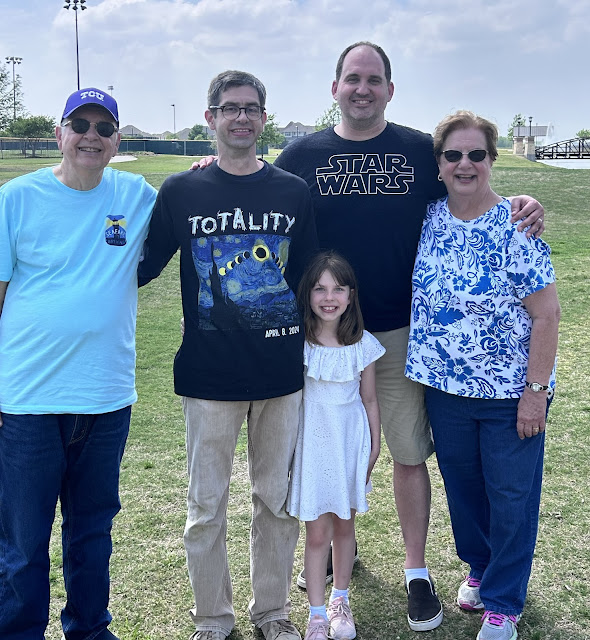Another Cool Eclipse Fact: Cycles!
Solar eclipses have another amazing fact- they come in cycles. Perhaps even more amazing? How that fact was discovered. The Saros Cycle was discovered by the Baylonians in the 7th or 8th Century B.C.
Here is how they did it:
https://skyandtelescope.org/astronomy-news/how-did-the-ancients-predicted-eclipses-the-saros-cycle/
When a solar eclipse happens, 18 years, 11 days, and 8 hours later, another solar eclipse with similar circumstances will occur 1/3 of the way west around the Earth.
A saros series will start as a small percentage partial eclipse over the north or south polar region, gradually move north (or south) toward the equatorial regions (where the saros reaches its maximum duration (of totality or annularity (ring of sunlight)). Then the saros continues to the opposite pole as it fades.
The April 8, 2024 total solar eclipse is part of Saros #139. This page shows a bit more about the eclipses in Saros 139: https://www.eclipsewise.com/solar/SEsaros/SEsaros139.html
Take a look at the eclipse of July 16, 2186. It has a maximum totality duration of 7 minutes and 29.6 seconds. The longest possible totality duration (at all) is 7 minutes 31 seconds.
It's the longest totality for a solar eclipse until at least the year 6000 (and since at least 4000 B.C.)
Perhaps distant relatives of yours will see that total solar eclipse.
So, the Saros that this April eclipse is a part of is very significant. Share this with your fellow eclipse watchers on the big day!

Comments
Post a Comment